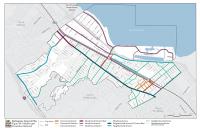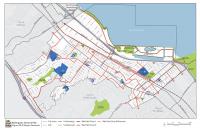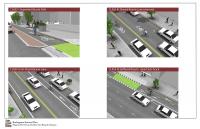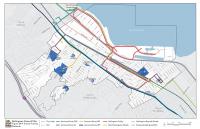Performance Measures and Guidelines
Performance measures and guidelines for transportation projects in California historically have been guided by the California Environmental Quality Act (CEQA). If a project exceeds a significance threshold for a given metric, it will often trigger the need to prepare an Environmental Impact Report (EIR). In Burlingame, consistent with long-established practices, transportation projects have been analyzed based primarily on their potential impact on local traffic operations. Traffic impacts are measured using the Transportation Research Board’s Highway Capacity Manual level of service (LOS) methodology for signalized intersections, which are graded A through F based on performance (with F representing a failing grade). A project triggers a traffic-related threshold if calculations indicate an unacceptable degradation in LOS—in other words, if the average intersection delay is expected to increase to unacceptable levels (often LOS E or F). This typically leads to vehicle-centric traffic impact mitigations that dedicate right-of-way to vehicle storage and throughput, such as road widening or turn pockets, that can improve traffic flow but erode the safety and efficiency of other transportation modes.
Guidelines from the California Office of Planning and Research recommend that cities replace LOS standards with multimodal vehicle miles traveled (VMT) standards. This approach has changed the way municipalities measure transportation impacts. By using VMT, the project evaluation process may prioritize more sustainable transportation modes over high-capacity intersections. This can generate far-reaching impacts, leading to safer, more efficient, and more sustainable local street design, and encouraging development in locations well served by multimodal infrastructure, rather than those characterized by low vehicle volumes.
The following goal and policies establish a VMT standard for Burlingame and outline specific actions and programs the City will undertake to ensure a multimodal approach to traffic impact analysis.
Goal: M-9
Achieve an improved paradigm for measuring the traffic impacts of development projects.



